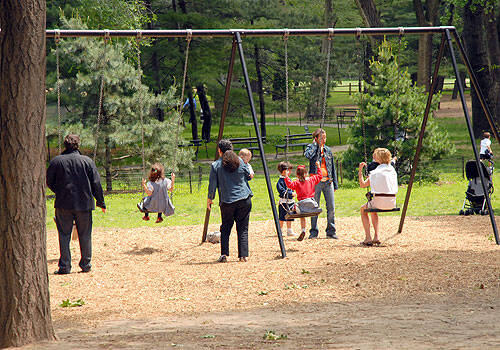Paul Ryan wants the Republican Party to talk more about poverty. The Wisconsin congressman, a possible presidential candidate in 2016, “hopes to roll out an anti-poverty plan” next year, according to a profile by Lori Montgomery in the Washington Post. Ryan is best known for preaching austerity in government, and Montgomery writes that he’s not about to give up that calling card:
Ryan’s new emphasis on social ills doesn’t imply that he’s willing to compromise with Democrats on spending more government money. His idea of a war on poverty so far relies heavily on promoting volunteerism and encouraging work through existing federal programs, including the tax code.
Since the 2012 election, the former vice presidential nominee has been touring inner-city neighborhoods and studying programs that help people “address their own problems.” His prescriptions seem to focus on the individual:
The takeaway for Ryan, a Catholic, has been explicitly religious. “You cure poverty eye to eye, soul to soul,” he said last week at the Heritage forum. “Spiritual redemption: That’s what saves people.”
The Post profile has elicited some skepticism. Jonathan Chait wrote, “Ryan loves the poor the way fundamentalist Christians love gays.” Regarding the claim that “spiritual redemption” can help those in poverty, Kevin Drum snapped, “Well, maybe so. But here on Earth, money helps out too.”
Mocking the spiritual component of anti-poverty efforts can be as glib as, say, asserting that social welfare programs encourage laziness. Still, the “eye to eye” method is not always the best way to help the less unfortunate. Giving your time to help individuals in your own community (whether or not it has significant poverty) is more emotionally satisfying than paying taxes or writing a check, but there has to be a way to meet the basic human needs of those who are out of sight. That will be the challenge of a Ryan anti-poverty plan.
I thought of the “eye to eye” limitation when reading about hedge fund manager John Paulson’s contribution of $100 million to the Central Park Conservancy in New York—the largest-ever gift to a public park, which happens to be the one that Paulson favors for his own running and biking. The New Yorker’s Benjamin Soskis reports that the Central Park Conservancy already had an endowment of $144 million, and he puts Paulson’s gift in the context of philanthropists favoring highly visible institutions:
In the past few years, there has been a mounting chorus of criticism regarding the small percentage of mega-philanthropy directed to the nation’s neediest citizens. Of the top fifty largest individual gifts to public charities last year, the writer Ken Stern noted, “not a single one of them went to a social service organization or to a charity that principally serves the poor and dispossessed.” (Thirty-four went to colleges or universities, while nine went to museums and arts organizations.) The private supporting foundations that have been bolted onto many of the nation’s most élite public schools have also attracted critical attention. These foundations soak up donations from willing parents, bestowing iPads and architecturally exquisite playgrounds on select schools—amenities that schools in less affluent districts, or without their own foundations, must do without. As the Stanford political scientist Rob Reich recently wrote in the Times, such giving receives generous subsidies in the tax code, but actually “widens the gap between rich and poor” and “exacerbates inequalities in financing.”
The Central Park Conservancy became an issue in this year’s mayoral campaign when the eventual winner, Democrat Bill de Blasio, endorsed a plan that would require well-funded park conservancies (i.e., the ones John Paulson is likely to see) to donate 20 percent of their operating budgets to a general fund supporting parks in less affluent areas of the city. De Blasio told the television station NY1:
“I think we have to share the wealth a little bit here,” de Blasio said. “So for anyone who wants to donate to Central Park, they’re still going to be helping Central Park, most of the money is still going to benefit Central Park, but some of that has to be moved to where the need is greatest, in neighborhood parks that right now, are really suffering.”
This diversion (“hijacking”?) of funds challenges the idea that charitable people should pick the beneficiaries of their largesse. But it does get at the “out of sight” problem that leads to the neglect of facilities in poorer neighborhoods away from a city’s tourist areas. The contributions to the park funds are still voluntary, so it’s an alternative to a general tax that would hit all citizens, including those least able to afford it. If Paul Ryan can come up with similar innovations, instead of merely suggesting that “volunteerism” replace the federal government’s cutbacks in social services, he will merit attention as a serious leader.
Photo of Central Park from the Central Park Conservancy website.








